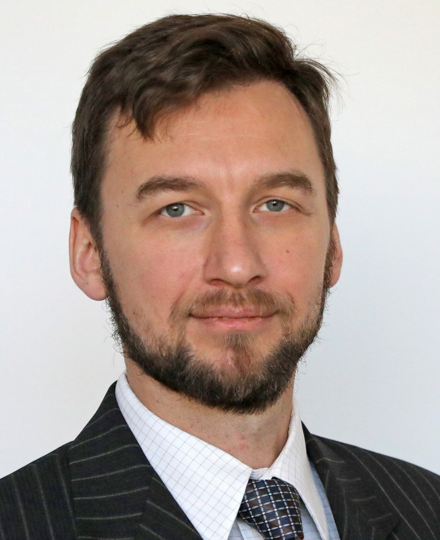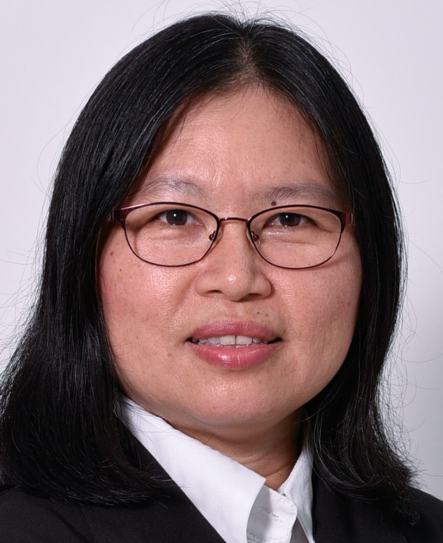New developments in the application of TRIZ to solving problems in complex systems, including business and social ones
Speakers: Alla Zusman and Boris Zlotin, Ideation International Inc.

Alla Zusman is Director of TRIZ Product Development in Ideation International Inc. Ms. Zusman is a certified TRIZ Master, one of the main developers of the TRIZSoft® family of software, Ideation Office of Innovation Tools and is an instructor in its all applications. She received her TRIZ education from the TRIZ founder Genrich Altshuller and has 40 years of TRIZ experience, including participating as a fellow instructor in seminars conducted by Mr. Altshuller during 1983-1986. She co-authored multiple books (including several with Mr. Altshuller), patents and numerous papers, taught TRIZ to thousands of students around the world.

Boris Zlotin is Vice President of Ideation International Inc., and Chief Scientist and co-founder of Progress Inc. Mr. Zlotin is a certified TRIZ Master with almost 50 years of experience, including participating as a fellow instructor in numerous seminars conducted by the TRIZ founder Genrich Altshuller during 1981-1986. He is widely recognized as the leader of the TRIZ community and considered one of the foremost theorists and TRIZ scientists in the world today. He is responsible for the majority of the advances made to the methodology to date, trained over 10,000 people around the world and solved over 30,000 problems. He is a multiple patent-holder and author of books, papers, and special publications on TRIZ. Since 2012 is involved in the development of the new type of AI – Progressive Artificial Neural Networks (PANN).
Classical TRIZ was developed primarily to address technical problems. Also, in the late 1970s, as a result of using TRIZ in Value Engineering Analysis, accumulation of experience in solving non-standard problems of production organization and prevention of production defects started. In the mid-1980s, we developed and effectively implemented a methodology for solving scientific problems with the help of TRIZ. In 1986 when Kishinev TRIZ group established the world’s first commercial TRIZ company we faced the need to solve problems in the field of business and management.
Over the past 30 years, we have accumulated extensive experience in these areas resulting in the development of new analytical and knowledge-based tools, eventually embedded in several software products. The presentation will briefly demonstrate the methodology and results of its application to a number of practical problems for various customers.
TRIZ and Progressive Artificial Neural Networks (PANN)
Speakers: Vladimir Proseanic and Boris Zlotin, Progress Inc., Ideation International Inc.

Vladimir Proseanic is Chief Executive Officer, Chairman of the Board of Directors and co-founder of Progress Inc., Omega Server Inc. Former Director of Analytical and Intellectual Property Services at Ideation International, Inc., USA, Mr. Proseanic has accumulated diverse leadership and managerial experience as the leader of multiple successful engineering innovation projects and the Director of the world’s first private TRIZ company. Under his leadership, Progress Inc. has obtained 11 patents worldwide for the next generation of artificial neural network technology. Omega Server Inc. is aimed at the development of revolutionary digital servers licensed by Progress Inc. for artificial intelligence applications. Trained by the TRIZ founder Genrich Altshuller in the early 1980s, Mr. Proseanic is widely recognized in the TRIZ community as a brilliant inventor, the author of multiple patents, and an active contributor to the science of innovation.
In 1958, Dr. Frank Rosenblatt built the world’s first operational artificial neural network, the perceptron. Unfortunately, there were two fatal errors in his work caused by the absence of important biological knowledge at that time. Consequently, these errors remained in all existing artificial neural networks being responsible for their inefficient development. Recognition of these errors and the use of TRIZ for their elimination allowed Progress Inc. to develop the fundamentally new neural networks PANN (Progressive Artificial Neural Networks). PANN have being implemented in several software products, one of which has been tested and is being used in one of the products on the market for trading on the exchange. There is an active development of a group of new products based on PANN, including for use in TRIZ software for solving inventive and research problems.
PANN is revolutionizing the business opportunity for neural networks and artificial intelligence. The development and training of neural networks with minimal costs by small companies and individual specialists is becoming real, similar to the way the first Internet products were developed in the 1990s.
The conducted Ideation Directed Evolution® project has shown among other results that over the next 10 – 30 years, based on PANN and TRIZ software, most systems in our environment will be replaced by “smart products”, just as in the 19th and 20th centuries, products existed at that time that used humans as a source of energy were being replaced with products using external energy sources – steam, electric power, etc.
The presentation will demonstrate the test results and the operation of the PANN network itself.
How to Advance TRIZ into an Exact Science
Speaker: Victor Fey, GEN TRIZ, LLC.

Victor Fey, TRIZ Master, is CEO of GEN TRIZ, LLC, and a close associate of Genrich Altshuller, the founder of TRIZ. Victor Fey has over 35 years’ experience in TRIZ research, training, and application. Since The TRIZ Group’s inception in 1995, Victor has collected more than two decades of consulting experience serving the Global 1000. His work has ranged the gamut from teaching, coaching and consulting, to facilitating and leading cross-functional teams in delivering critical breakthrough product and technology solutions. Only at Hyundai-Kia Motors, his consulting effort resulted in obtaining over 100 patents with an estimated ROI of $100 million.
Among his clients are ABB, Autoliv, Bosch, Chrysler, Delphi, Dow Chemicals, Ericson, Eaton, Ford, Hyundai, ITT, Mars, Motorola, Nokia, Siemens, Owens Illinois, Sherman Williams, and many others. From 1997 through 2014, he was an Adjunct Professor at Wayne State University, where he taught the first graduate-level course in TRIZ in the West. He has lectured on the subject at MIT, Stevens Institute of Technology, Chalmers University, Technion, and others. He chairs International TRIZ Association’s R&D Council, as well as the Education Committee of the Altshuller Institute for TRIZ Studies. His books include “Effective Innovation: The Development of Winning Technologies”, published by ASME Press and “Innovation on Demand: New Product Development Using TRIZ”, released by Cambridge University Press (translated to Korean).
Each milestone in TRIZ advancement has been characterized by enhanced accuracy and effectiveness of its concepts, methods, and tools. Transition to increased formalization has been a prevailing trend of TRIZ development. This trend can be seen in the progression of ARIZ: from few-step sequences of its early versions to systems of several dozen operators of its latest ones. Another obvious example is the reinforcement of laws of technological systems (TS) evolution with numerous lines of TS evolution (a law of TS evolution serves as a compass pointing in the right direction, while associated lines are roadmaps that chart particular paths in the technology landscape along this direction).
Despite this impressive progress, TRIZ is far from being an exact science (or methodology, if you will). Here are just a couple areas in which TRIZ still lacks accuracy and effectiveness:
• Identification of a complete set of strong solutions. Applying TRIZ to a technological or business problem situation results in a set of solutions that maximally meet the project criteria. How can one make sure (or, better, proof) that the developed solutions are the most effective ones, and that no other effective solution(s) has been missed?
• Identification of the most promising lines/trends of evolution.Any TS progresses along many lines/trends of evolution, each offering an innovation opportunity. Given limited resources any company has, it can usually invest in one of these opportunities. How can the company select one line/trend of evolution, among many, that promises the best and quickest ROI? This list can be easily expanded.
The talk will discuss key challenges of TRIZ evolving into an exact science (methodology) and present a list of high-potential directions for TRIZ research and development that can me these challenges.
TRIZ, Big Data and improving of UI of electronic devices
Speaker: Valeriy Prushinskiy, Principal Engineer at Samsung Electronics.

Valeriy Prushinskiy is a specialist in problem solving and intellectual property. He is a Certified TRIZ Master with more than 30 years of application and development of TRIZ methodology. He has been working for the Global Technology Research Institute in Samsung Electronics, and for Tech Innovation group and TRIZ Problem Solving / Consulting / Training in Samsung Display, South Korea. He has been Director of Analytical Services and Project Manager at Ideation International, USA. He is author of two books “Hybridization: The New Warfare in the battle for the Market” and “Everyone Can Invent”.
Modern internet connected electronic devices generate a large amount of live data and eventually provide substantial historical data. Can modern TRIZ provide a methodology to improve ideality of individual devices based on these big data flow? Simply speaking, the question is how to use available data flow to provide to consumer better products and services. The keynote presentation will explore some examples of data-driven products helping to integrate data from various sources in order to improve convenience of use and enhance user experience.
Contemporary electronic devices need to provide various functions intuitively and almost instinctively. However, if functions desired to be performed by a user require a cumbersome procedure, the utilization of corresponding functions may be decreased. Accordingly, there is a need for a TRIZ approach to determine performing a function of an electronic device that enables the access to various functions in a more convenient and instinct manner. In framework of the presentation, the speaker will describe initial situation, contradictions and how they were resolved in process of development of UI of electronic devices from TRIZ perspective.
Deep Learning and machine creativity
Speaker: Paweł Wawrzyński, Warsaw University of Technology

Paweł Wawrzyński, PhD, DSc, is an assistant professor at the Artificial Intelligence Division of Warsaw University of Technology. His research interests include neural networks and reinforcement learning. He has been awarded multiple times for his scientific achievements by the rector of Warsaw University of Technology. While his primary background is computer science, he is also an MSc in economics. He holds several patents in the fields of telecommunications and mechanical engineering.
The computer program Alpha Go defeated a human grandmaster of the game of go. This program had used deep reinforcement learning and playing this game with itself. It was making moves that were surprising to human grandmasters. The program thus demonstrated a form of creativity.
Deep learning is also applied to produce multimedia content, especially pictures, sound tracks and movies that is realistic, although unlike any of those seen in the course of learning. Another analyzed application of deep learning is the style transfer: Multimedia is produced with a given content and an independently given form. This way photos taken today can look as if they have been painted by our favorite Renaissance painters. The talk will overview the above forms of machine creativity.
Integrating TRIZ with AI in the era of the Fourth Industrial Revolution
Speaker: Mei Choo Ang, National University of Malaysia

Mei Choo Ang is a Research Fellow at the Institute of IR4.0 in the National University of Malaysia (Universiti Kebangsaan Malaysia), which is formerly known as the Institute of Visual Informatics (IVI). She holds a Ph.D. Degree from the School of Mechanical Engineering, University of Leeds, UK; a M.Sc. Degree in Control Systems with Distinction from the Department of Automatic Control and System Engineering, University of Sheffield, UK and a Bachelor of Mathematics Degree with honours from the Universiti Kebangsaan Malaysia. She has won multiple awards including the ICEEI 2013 Best Paper Award, IVIC 2017 Young Writers Merit Award. She was the 1st Runner Up in the International MyTRIZ Competition 2015 and 2018, and 2nd Runner Up in the International MyTRIZ Competition 2016. Her research interests include Artificial Intelligence, Theory of Inventive Problem Solving (TRIZ), Design Optimisation, Shape Grammars, Modelling and Simulation.
With the advancement of the internet and computer technology in the Fourth Industrial Revolution (4IR), many companies have to embark on the emerging digital technologies to be competitive in the current global market. These emerging digital technologies are disruptive and pose critical challenges to engineers and researchers in dealing with increasingly complex engineering tasks from sustainable design to design optimisation. TRIZ is one of the established methods applied in many engineering domains. With the arrival of 4IR, TRIZ can be integrated with these 4IR technologies to assist engineers to deal with complex engineering tasks effectively. TRIZ was integrated with patent mining technology to provide better, up-to-date and potential ideas and information to engineers from the conceptual solution to future technological trends perspectives. TRIZ was also explored to derive better discrete search operators for optimisation algorithms. The presentation will talk about the development of the related research work and demonstrate the applications and results.

